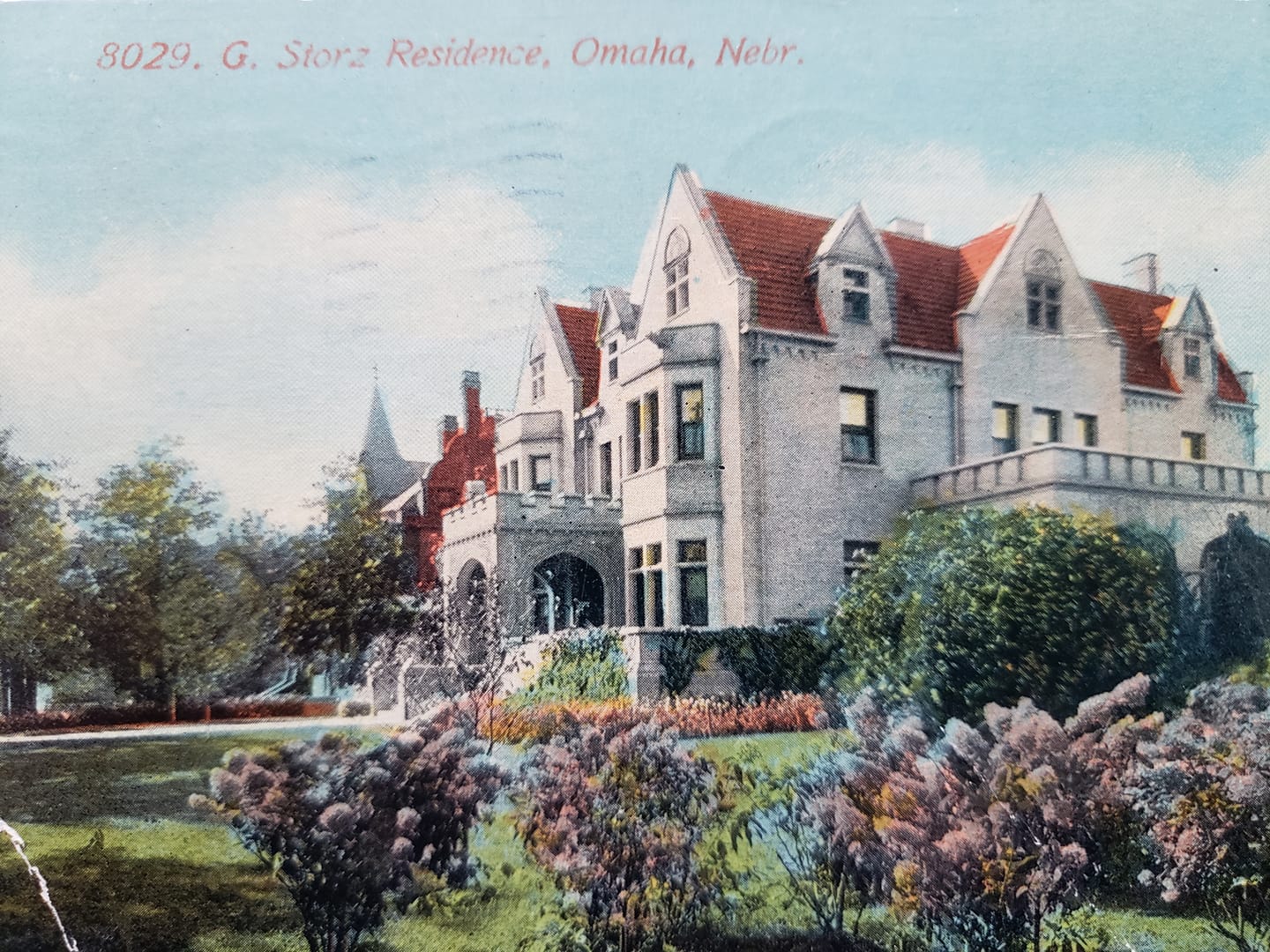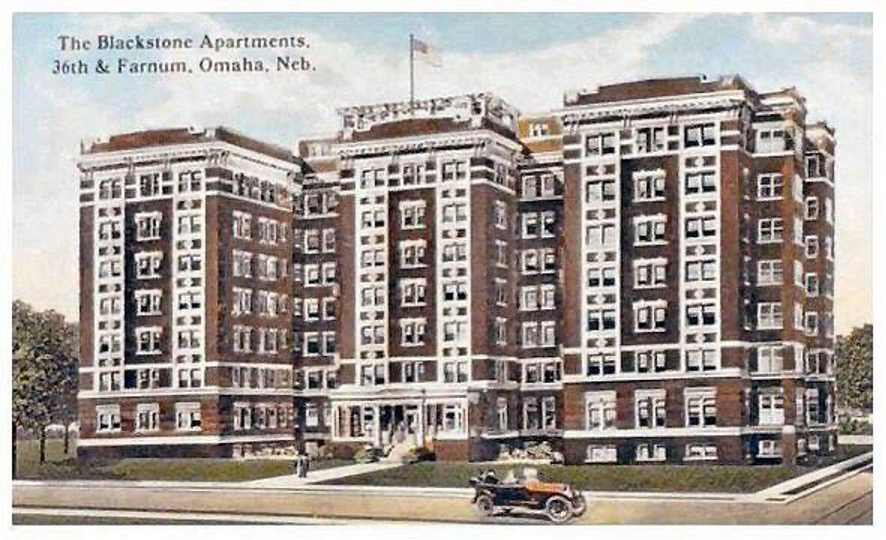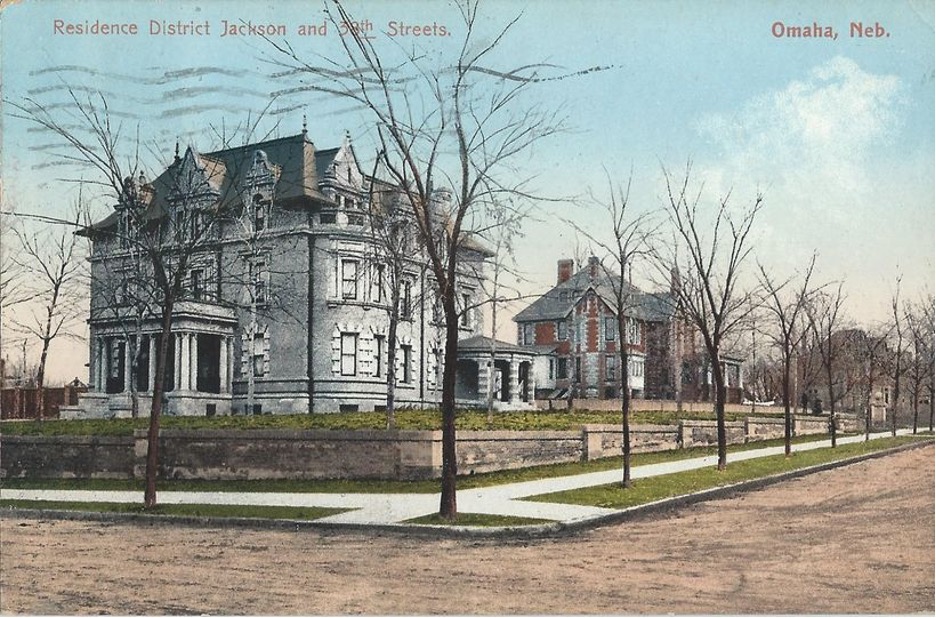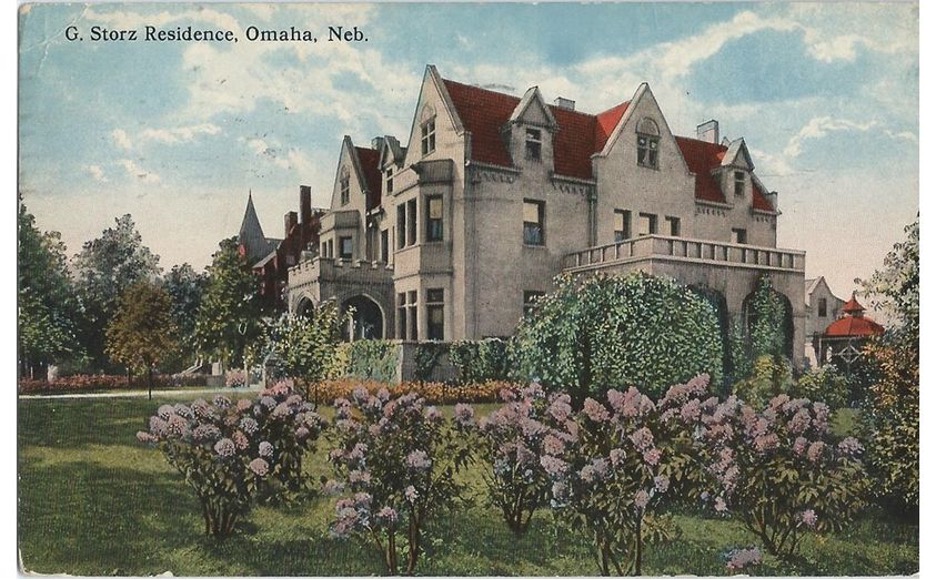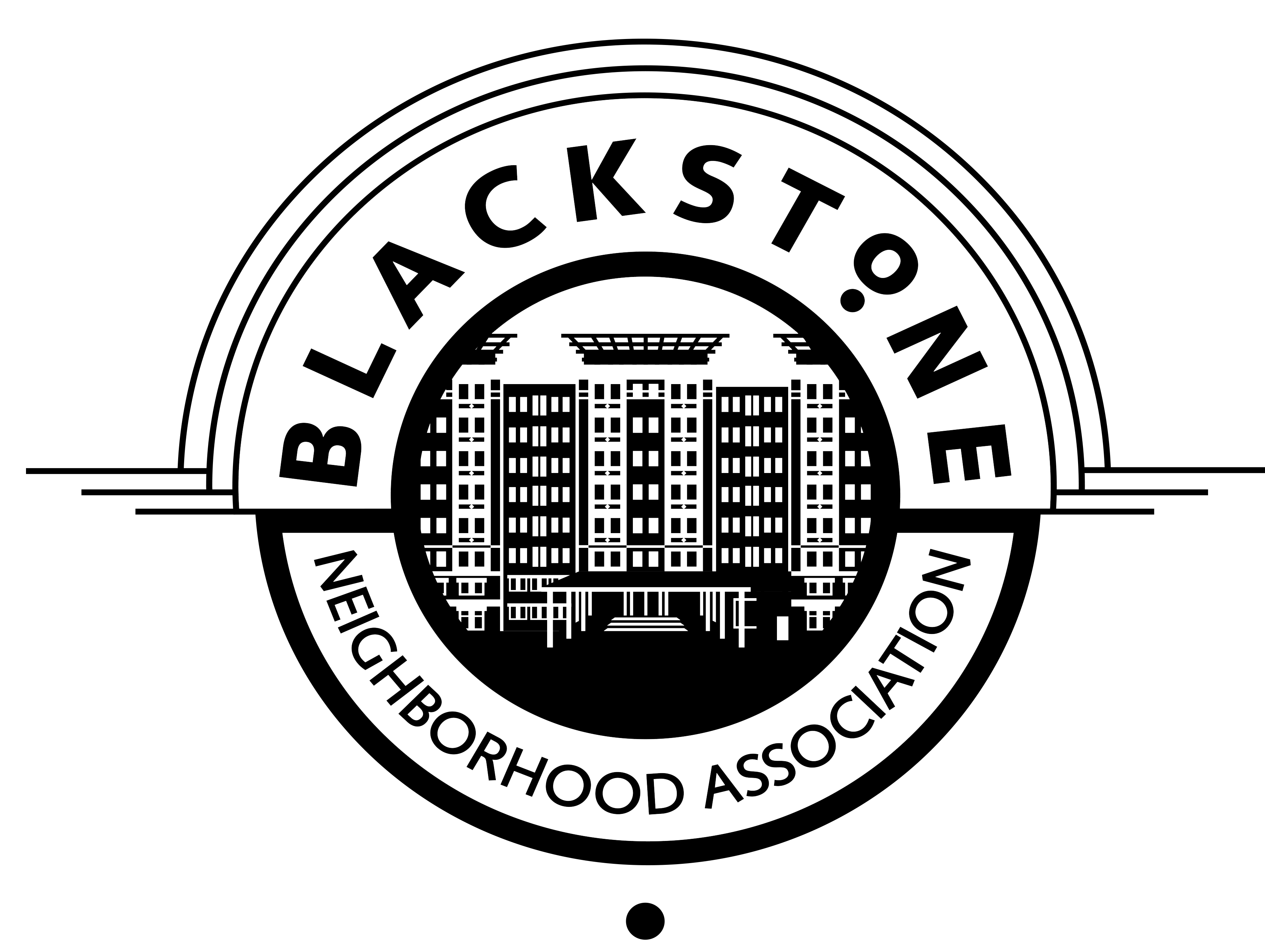From the application to National Register of Historic Places. Gold Coast District, 1997.
The Gold Coast Historic District of Omaha, Nebraska, is located 15 blocks west of the Central Business District on approximately 30 blocks. There are more than 400 buildings in this rectangular district and the types range from single family and multi-family housing to commercial properties. The streets in this part of Omaha are set in a grid pattern with six north south streets and eleven east west streets. The area has changed somewhat over time, but integrity remains very strong in both individual houses and overall appearance.
The Gold Coast district covers an area roughly from 36th to 40th Streets, Jones to Burt Streets. This area consists of large Mansions, smaller single-family homes, duplexes and some apartment buildings. Most of the people who lived in the area during the late l9th and early 20th centuries were the upper and middle classes of Omaha. The district contains two distinct areas—the West Farnam (currently the Blackstone) and the Cathedral neighborhoods.
These two areas, although distinct, were actually part of a much larger area called the Gold Coast.
Originally, the Gold Coast of Omaha was located along South 10th Street. As the city grew, the new rich moved west to the area called West Farnam. The area was annexed in 1897, and the east west area along Farnam Street developed as a commercial center. The Gold Coast expanded north and south of Farnam Street. The houses north of Farnam are not as elaborate as those south of Farnam, although the houses found on N. 38th Street are comparable in scale, massing, and appearance.
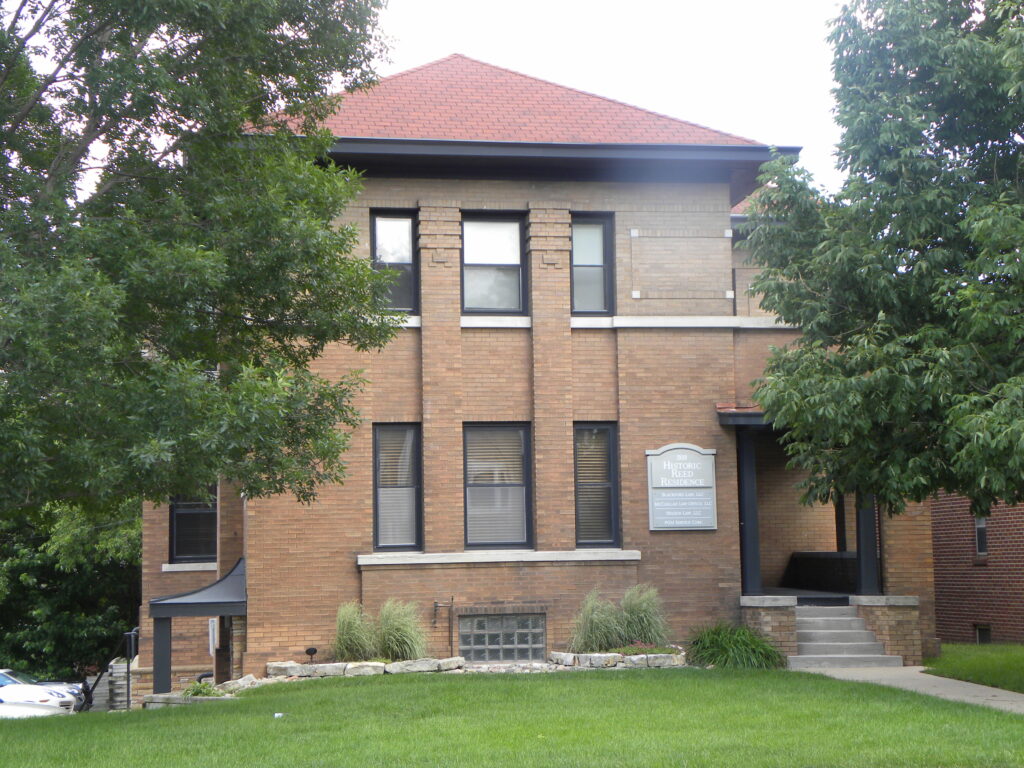

Architectural styles vary considerably throughout the district.
The first homes, built in the 1880s were predominantly large Queen Anne homes built for the middle classes. Between 1890 and 1920, large mansions were built. These were usually designed by local architects and were unique in character. Business owners, doctors, and professionals lived in these areas, but none of the mansions were constructed by “old” money. The men who built this area of Omaha were the city’s entrepreneurs.
Along Farnam and Dodge Streets the character of the district has changed somewhat. In the early 1910s some of the single-family residences were removed for commercial development. Currently, hotels, commercial property and some single-family residences line these two streets. Much of the commercial property, constructed during the district’s period of significance contributes to the district’s historic character. More modern buildings are considered non-contributing, but non-intrusive as they are generally built in similar massing and scale. Many of the original mansions along Farnam Street are non-extant. Most were demolished and replaced with commercial buildings during the period of significance Currently, the Storz Mansion at 3708 Farnam is the only extant mansion along that street.
Although the historic dividing line that separated the two neighborhoods of the Gold Coast—the West Farnam and the Cathedral neighborhood—was Davenport Street, the most pronounced dividing line currently is Dodge Street. Some of the houses along Dodge were lost when the street was widened, but a strong corridor of large mansions is found along 38th Avenue and 39th Street both North and South of Dodge.
